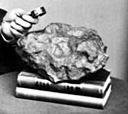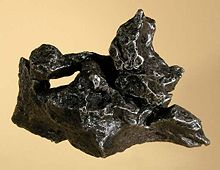O Captain! My Captain!
O Captain! my Captain! our fearful trip is done,
The ship has weather’d every rack, the prize we sought is won,
The port is near, the bells I hear, the people all exulting,
While follow eyes the steady keel, the vessel grim and daring;
But O heart! heart! heart!
O the bleeding drops of red,
Where on the deck my Captain lies,
Fallen cold and dead.
O Captain! my Captain! rise up and hear the bells;
Rise up—for you the flag is flung—for you the bugle trills,
For you bouquets and ribbon’d wreaths—for you the shores a-crowding,
For you they call, the swaying mass, their eager faces turning;
Here Captain! dear father!
The arm beneath your head!
It is some dream that on the deck,
You’ve fallen cold and dead.
My Captain does not answer, his lips are pale and still,
My father does not feel my arm, he has no pulse nor will,
The ship is anchor’d safe and sound, its voyage closed and done,
From fearful trip the victor ship comes in with object won;
Exult O shores, and ring O bells!
But I with mournful tread,
Walk the deck my Captain lies,
Fallen cold and dead.
Meaning:
O Captain! My Captain’ is a
moving poem in which Whitman expresses his profound sense of grief at a tragic
end of a leader of men is addressed to Abraham Lincoln, one of the greatest
presidents of the United States of America, who fought a war (the American
Civil War) against the Southern States to give the Negro slaves freedom and
human dignity. The war was won, the slaves were freed, but Lincoln, soon after
his election as president for a second term, fell a victim to an assassin’s
bullet.
The leader is being conceived as the brave captain of a ship who falls dead on the deck just when the journey is over and the victory is won. Whitman delivers the message to the captain and declares that their fearful and dangerous trip is done. Their ship had withstood every destructive encounter and their prized reward that they longed for is won. Their weary ship is drawing near the sea-port, the church bells are ringing to celebrate a victory and the people are rejoicing. Yet in the midst the celebration, he sees that within the grim and the daring vessel, his heart would spill profusely with drops of blood of immeasurable sadness to see his captain lying cold and dead.
Whitman pleads desperately to the captain to get up from his bed and see that the people are flying the flag just for him. The people are blowing their trumpets and bugles and are waiting to present him with bunches of flowers and decorated garlands to honour him-the victor. The seashores are swaying with crowds of cheering people. All the faces of the people on the shore are eager to see the captain addressing them from the deck. Yet the captain, a father to all people of the nation slept still and cold with his arm beneath his head. It is like an unbelievable bad dream that the leader is dead at the moment of victory.
The leader is being conceived as the brave captain of a ship who falls dead on the deck just when the journey is over and the victory is won. Whitman delivers the message to the captain and declares that their fearful and dangerous trip is done. Their ship had withstood every destructive encounter and their prized reward that they longed for is won. Their weary ship is drawing near the sea-port, the church bells are ringing to celebrate a victory and the people are rejoicing. Yet in the midst the celebration, he sees that within the grim and the daring vessel, his heart would spill profusely with drops of blood of immeasurable sadness to see his captain lying cold and dead.
Whitman pleads desperately to the captain to get up from his bed and see that the people are flying the flag just for him. The people are blowing their trumpets and bugles and are waiting to present him with bunches of flowers and decorated garlands to honour him-the victor. The seashores are swaying with crowds of cheering people. All the faces of the people on the shore are eager to see the captain addressing them from the deck. Yet the captain, a father to all people of the nation slept still and cold with his arm beneath his head. It is like an unbelievable bad dream that the leader is dead at the moment of victory.






